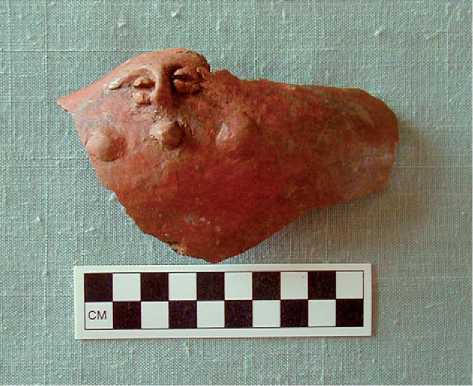Iconographic analysis is broadly the study of imagery with regard to the belief systems it reflects. Iconography studied on pottery may comprise naturalistic Illustrations or abstract symbolism (Figure 7). This sort of analysis generally is concerned with depictions as the basic data source - that is, with decorations as vessel features rather than with entire pots or assemblages of pottery. Inherent in archaeological icono-graphic analysis is the assumption that imagery on pottery of prehistoric or pre-industrial societies is an expression of beliefs and practices, as opposed to meaningless embellishment.
Even when there are few clues to the meaning of iconographic representations, they can be used to trace historical cultural relationships or inter-cultural contacts. A complex representation, for example, may be repeated with different permutations in adjacent culture areas, indicating a relationship between the belief systems of the two areas.

Figure 7 An example of simply modeled iconography on prehistoric pottery from the Virgin Islands, probably representative of a mythological character or spirit being.
If there is complementary information from other sources, such as other artifact classes, recorded mythology, or related known cultures, then iconography can be mined for meaning. In some instances, iconography on pottery has been very productive in the understanding of religion and ideology, in addition to activities and objects of daily life that may be depicted.
Although it is difficult to eliminate subjectivity from iconographic analysis, standardized procedures increase rigorous data collection and comparability. Complex iconography can be broken down into its component parts, and observed rules of composition (such as orientation and repetition) can serve as data in themselves. In a thematic approach, iconographic elements are related to ideological themes as known or estimated from other sources of information. For example, if bats are known to be associated with spirits of the dead in a particular cultural tradition, then bat representations can be traced through various forms, as expressions of the theme of the spirit world. Further, a humanoid image with bat characteristics, by following the same theme, potentially can be interpreted as an ancestor in the spirit world. In ceramic traditions that are especially rich in pictorial representation, entire mythological narratives have been identified in images on pottery.




 World History
World History









